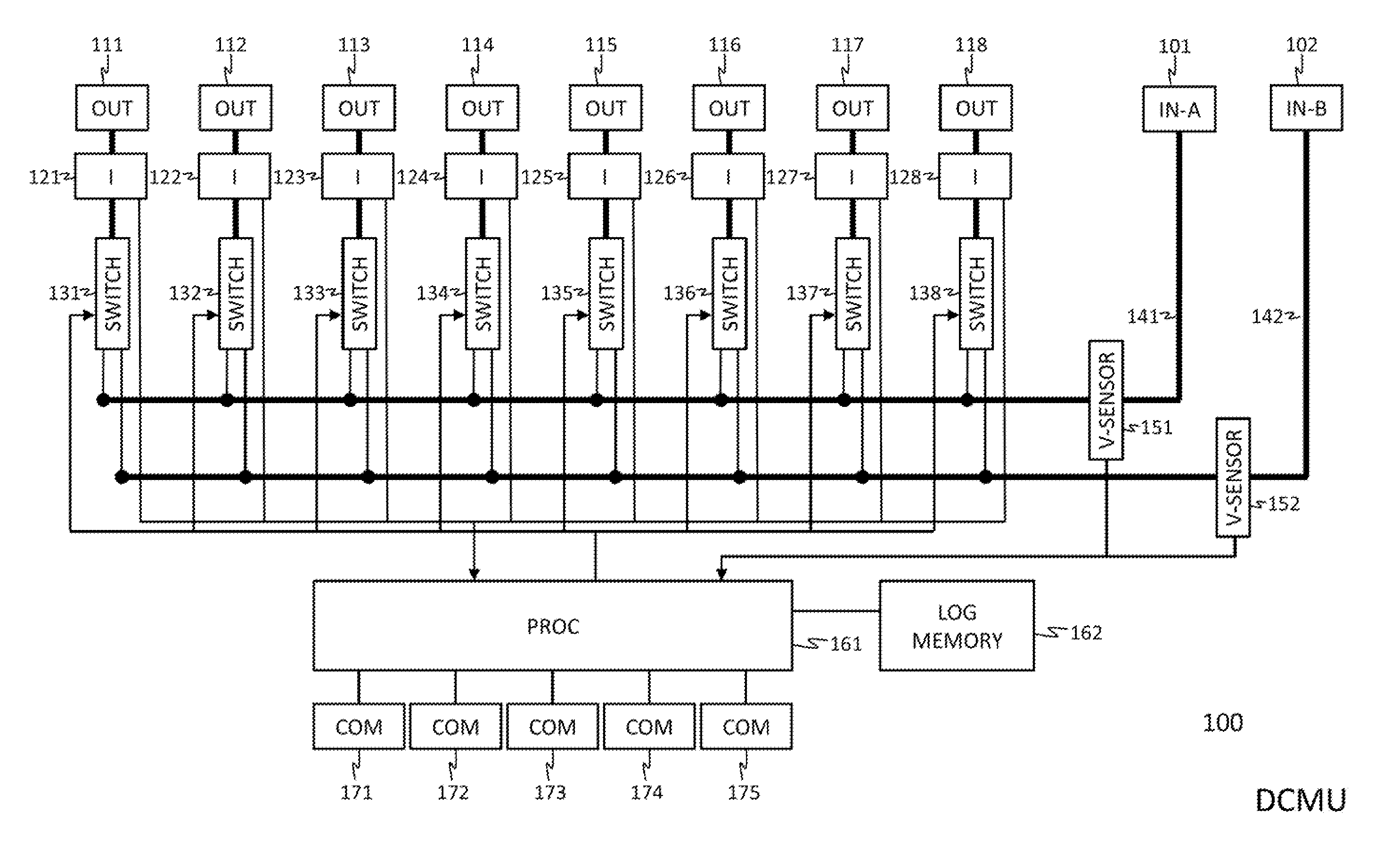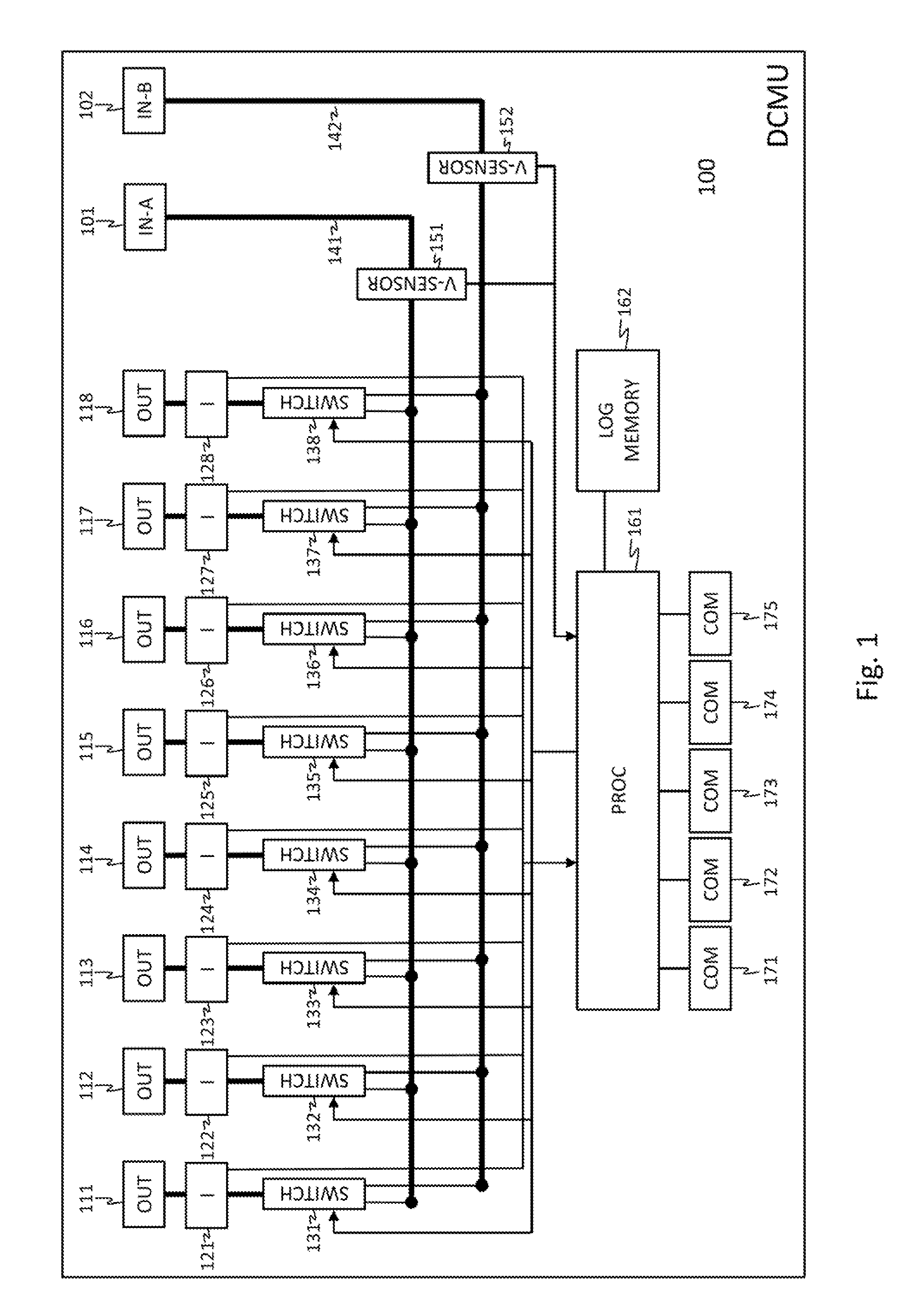Data center management unit with dynamic load balancing
a data center management and dynamic load technology, applied in the field of power management, can solve the problems of excessive power consumption, up to 40% of data center power supply not working optimally, and power has become one of the most difficult and expensive items to manage in data centers
- Summary
- Abstract
- Description
- Claims
- Application Information
AI Technical Summary
Benefits of technology
Problems solved by technology
Method used
Image
Examples
Embodiment Construction
)
[0102]FIG. 1 shows a data center management unit, DCMU or 100. The DCMU has a first power inlet, IN-A or 101, a second power inlet, IN-B or 102, eight power outlets, OUT or 111, 112, 113, 114, 115, 116, 117 and 118, a processor, PROC or 161, a memory, LOG MEMORY or 162, and five communication ports, 171, 172, 173, 174, 175. The communication ports 171, 172, 173, 174, and 175 are connected to the processor 161 and may represent wired or wireless interfaces such as RS232 ports, Ethernet ports, WiFi ports, etc. Each of the power outlets 111, 112, 113, 114, 115, 116, 117 and 118 is equipped with a current sensor, respectively denoted by I or 121, 122, 123, 124, 125, 126, 127 and 128. The current sensors 121, 122, 123, 124, 125, 126, 127 and 128 are connected to an input of the processor 161. At the first and second power inlets 101 and 102, the DCMU 100 is further equipped with voltage sensors, V-SENSOR or 151 and 152, placed in the power distribution wiring 141 and 142, and connected ...
PUM
 Login to View More
Login to View More Abstract
Description
Claims
Application Information
 Login to View More
Login to View More - R&D
- Intellectual Property
- Life Sciences
- Materials
- Tech Scout
- Unparalleled Data Quality
- Higher Quality Content
- 60% Fewer Hallucinations
Browse by: Latest US Patents, China's latest patents, Technical Efficacy Thesaurus, Application Domain, Technology Topic, Popular Technical Reports.
© 2025 PatSnap. All rights reserved.Legal|Privacy policy|Modern Slavery Act Transparency Statement|Sitemap|About US| Contact US: help@patsnap.com


